I arrive in Port Vila, Vanuatu mid-afternoon, sweltering hot but in good spirits after a grand ol’ visit with my seatmate, a jolly Aussie bloke from Bundaberg.
Dripping from the heat I beam at my host, Yoan, so glad he’s there to meet me and help me navigate my way to his family bungalows on Nguna Island. We find the car and driver he’s rented for me, load my little bits of luggage and then we’re off.
Our trek lead us along Vanuatu’s main road, a narrow but paved strip that was built only a couple of years ago by New Zealand investors. Yoan and his friend are very proud of this new road, explaining that a trip that takes 45 minutes now used to take 3-4 hours on the old dirt track.
I feel happy for them, trying to imagine the time and effort that would’ve gone into making a trip to Port Vila in the past. Frequent flood warnings are a minor inconvenience on this paved road. We simply have to slow down and the water is easily forded. But on a dirt road, a sudden influx of water would’ve been a catastrophe.
The smooth ride leads us through gloriously lush countryside dotted with towering palms dangling with clusters of coconuts, bananas and pineapples. My favorite parts are the villages, and I love when sharp curves force us to slow down, giving me amazing glimpses of brightly colored homes, school children waving as they walk home from school, women in vividly flowered dresses minding little ones or taking a break in the shade. I find myself wanting to shout, “STOP! STOP!” every other second so I can take pictures. But such antics would annoy even the most patient of drivers, so I content myself with snapping shots out the window, not caring that some are so blurry only I can tell what they are supposed to be.
Forty-five minutes later I see a large concrete dock jutting out from shore, clusters of villagers standing here and there waiting for their boat back to their island. They are dressed in a marvelous array of colors that stand out brilliantly against the blue of the sky and sea. I am mesmerized, feeling as though I’ve been plopped down into the pages of National Geographic. My driver takes me right out to the end of the dock, expertly navigating sacks of rice and baskets full of produce.
It is not quite time for the ferry to Nguna Island (pronounced noonah), so I join the waiting islanders, feeling rather conspicuous under their open gazes. I smile bravely and am rewarded with smiles in return, smiles that transform some rather intimidating visages.
When it’s time to board our little vessel, the village women make room for me on the bench, inspecting me openly though not unkindly. It is a little disconcerting, but I get over my self-consciousness as the motor starts and we get underway.
We slowly putter past the dock, noticing with interest the arrival of a new yellow and turquoise boat about to be lowered onto the waves. Then our driver cranks up the motor and we head out to sea.
Much to my delight, Yoan invites me to join him sitting somewhat precariously atop the motor boat. So I kick off my shoes, hand him my camera, and clamber up the side of the boat, grateful when the boatman slows down a bit so I don’t tumble head first into the Coral Sea.
It is definitely the best spot in the house. Behind us lies the main island of Efate where the capital city Port Vila is located. Ahead rise numerous islands, including Emao, Mataso, and our destination, Nguna.
After the sweltering heat of Efate, the wind and salty spray feel absolutely heavenly. My hair is a wreck in about five seconds, but I could care less. On these gorgeous but humid tropical isles, nothing is more wonderful than feeling cool.
As we motor along, Yoan fills me in on some of the history of Vanuatu. Until 1980, Vanuatu was known as the New Hebrides, and was jointly claimed by the Brits and the French. In 1980 the New Hebrides achieved independence and took on the new name of Vanuatu. Yoan said his country is comprised of about 83 islands, all of which have their own language, some of them have more than three or four with different dialects for each! After a bit of thought he concluded that most Vanuatans speak at least four languages: Pigeon, French, English, and the language of their tribe. I was very impressed.
He also explained that while most islanders are able to grow their own food, there is very little ability to earn money unless you travel to Efate to sell what has been grown or made. He said six days a week women from Nguna travel to Port Vila to sell produce to earn money for their families. On Sundays everything stops for they are a day of rest in this predominately Christian nation.
Yoan’s stories made the time pass quickly, and all too soon we pulled into the surf of Nguna. The sun hung low in the sky as I jumped into the water and hauled my belongings up onto the beach. Local villagers were having a marvelous time swimming in the warm waters of the Coral Sea or watching the goings on from a shady perch under enormous trees growing up through the sand.
Yoan lead me down the main road of Nguna, a hard packed dirt track lined with tidy huts, vibrant flowers, and verdant bush, and within a few minutes we arrived at my new home for the night: Vat-Vaka Bungalows.
I’ll tell you all about that next time. 🙂

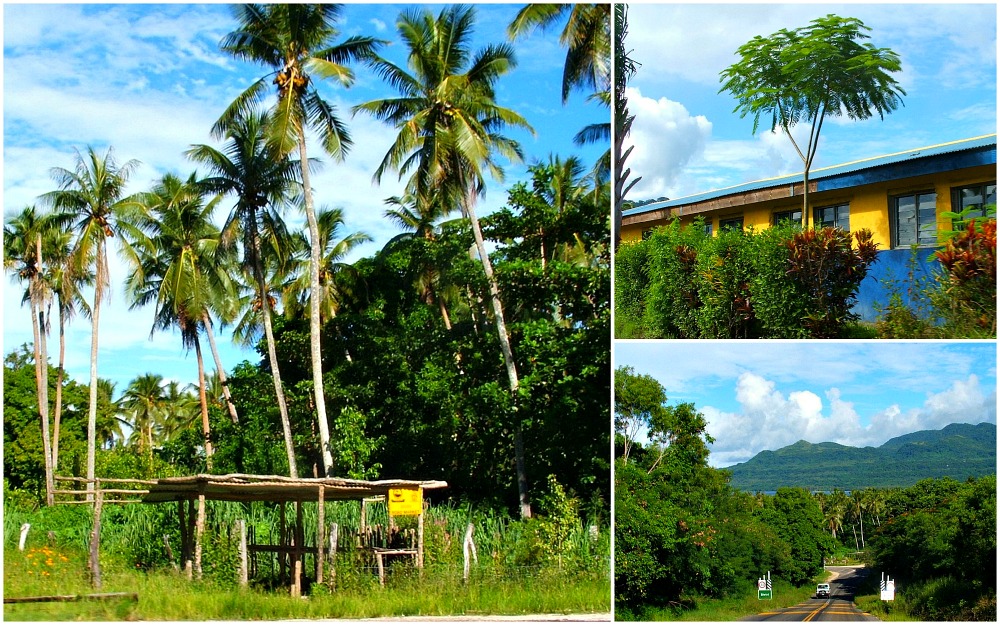
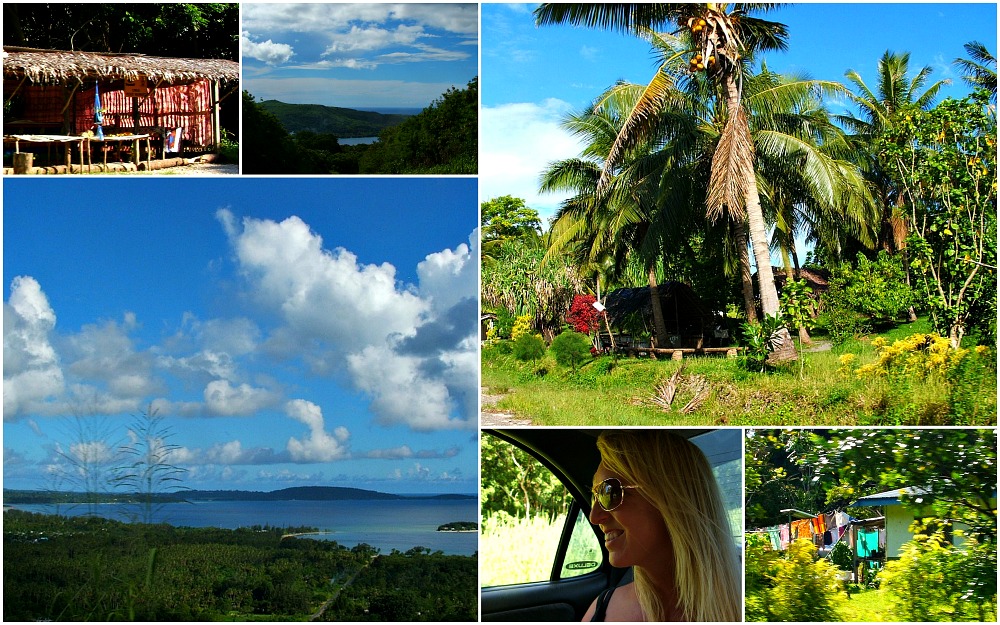
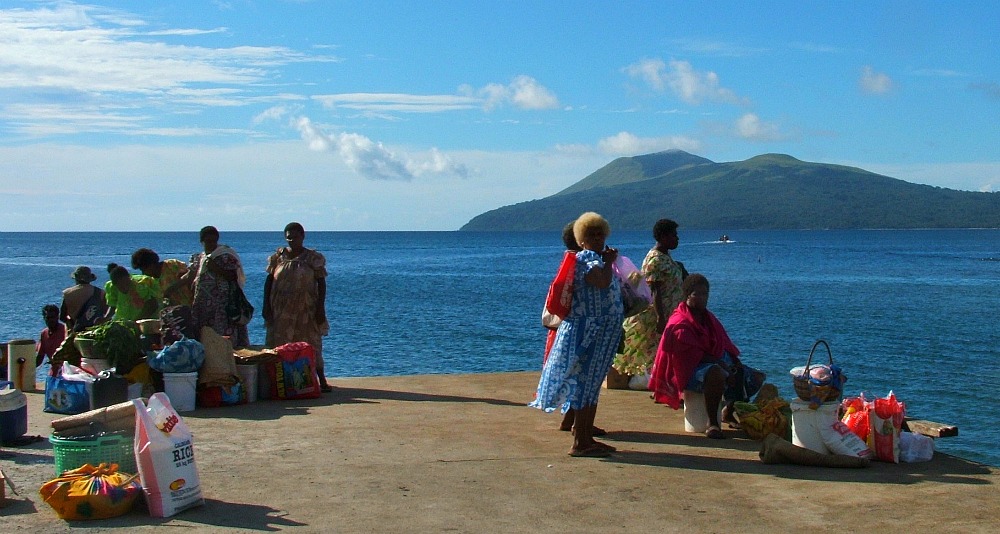
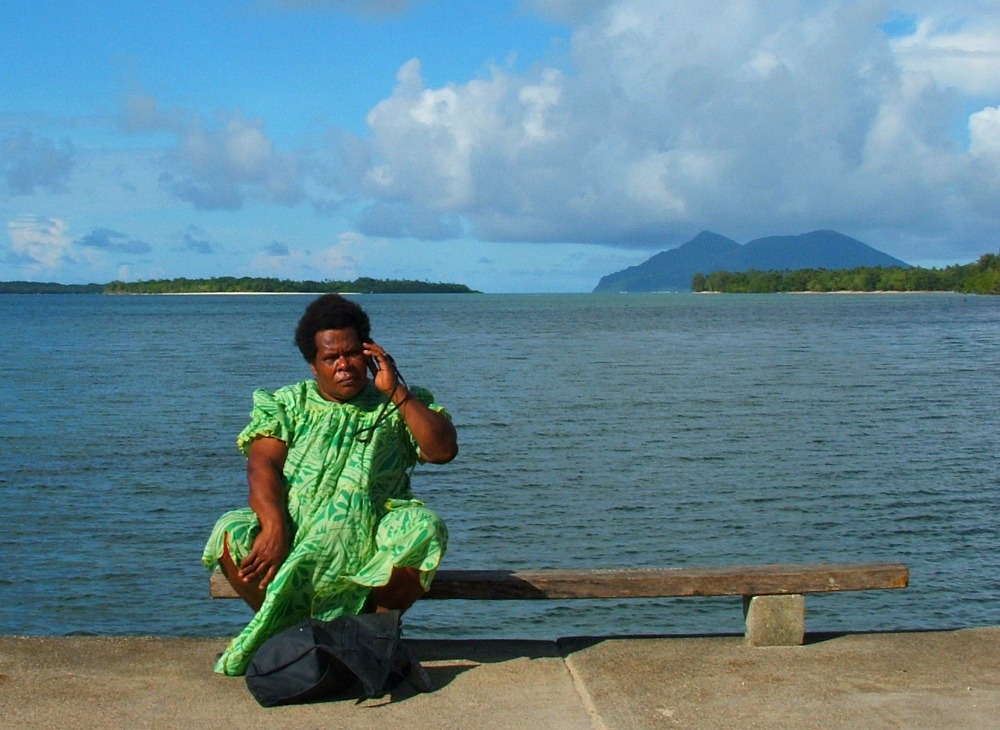
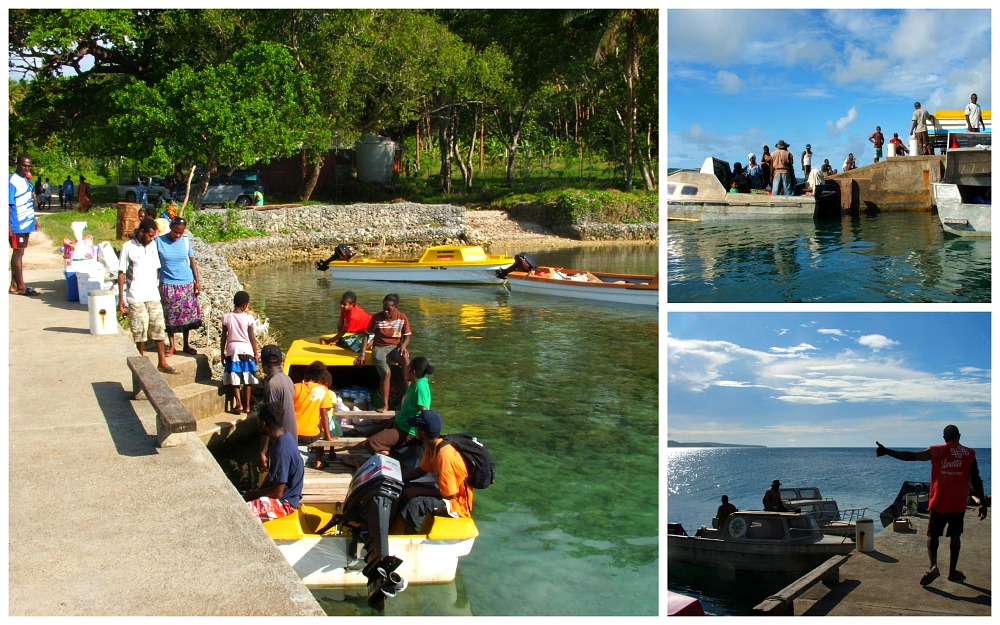
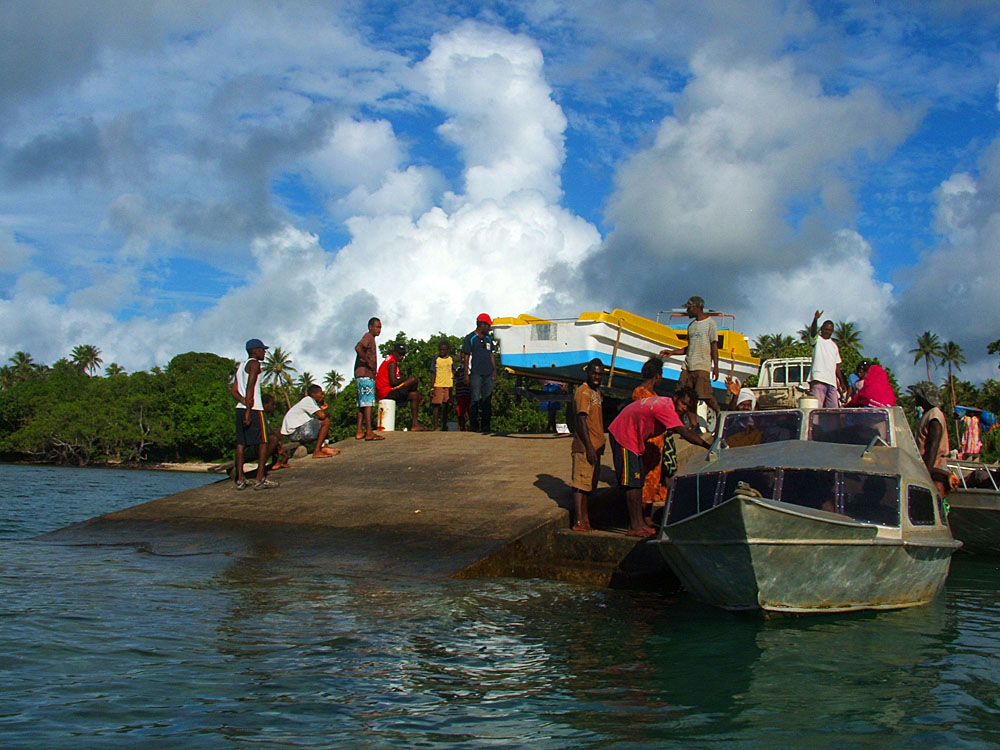
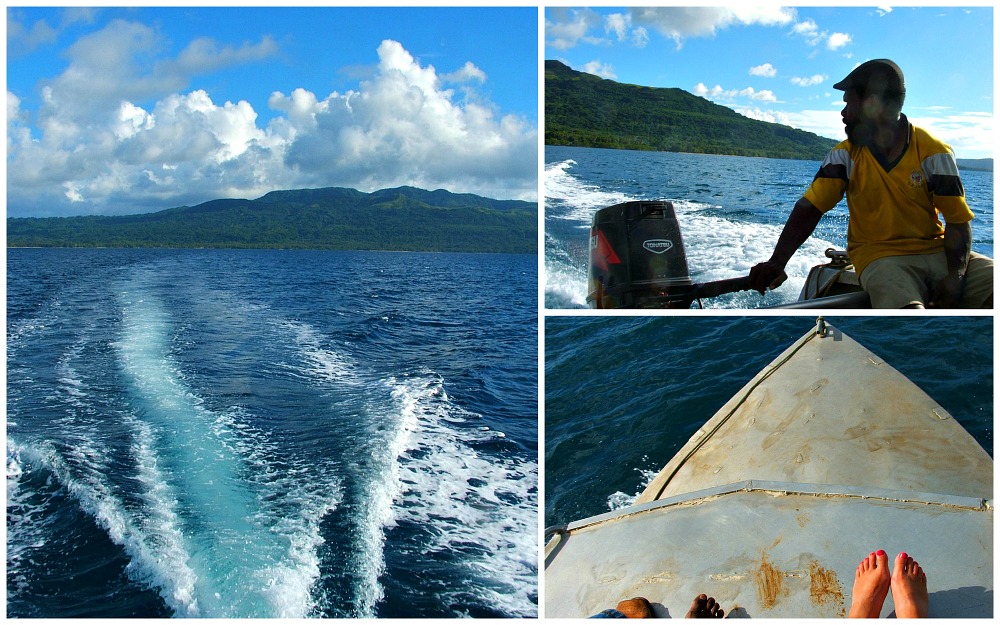
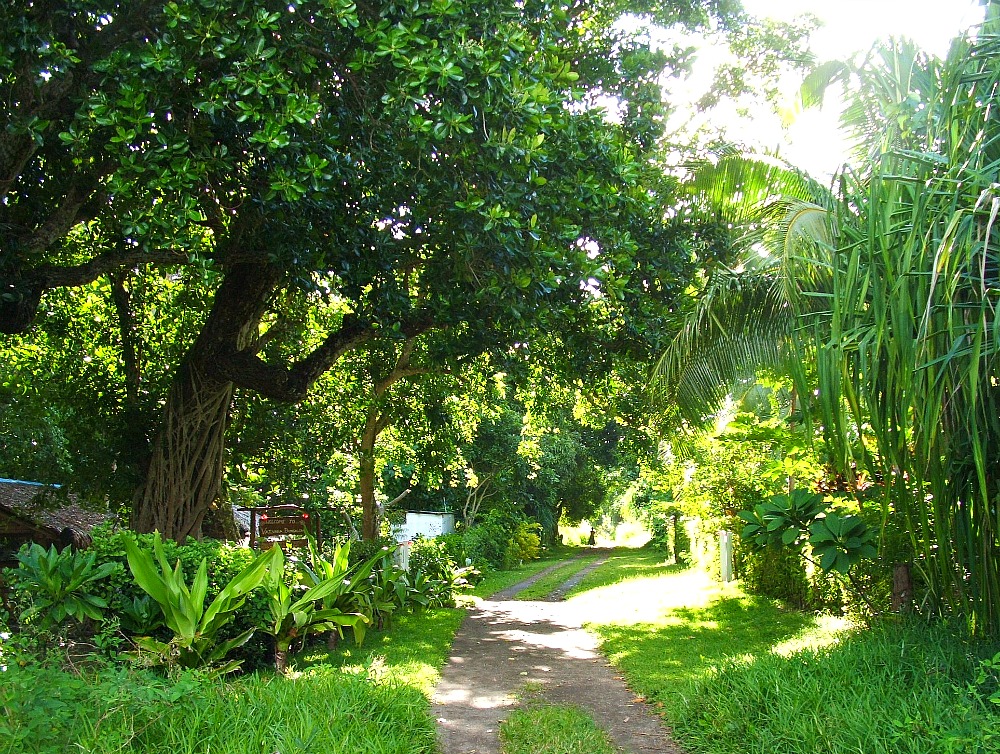
I can’t wait to hear ‘the rest of the story!’ The photos are astonishing, so much beauty everywhere, and you fit right in! =)
Isn’t it so gorgeous, Melody? It felt like the whole country has the color levels amplified. 🙂
you had a good journey.but did you like vanuatu?
I loved aspects of Vanuatu, Bethuel, but there were other parts that took some getting used to. 🙂 I’ll write more about that in my next post. 🙂
You have been having the most amazing travel adventures and I am so envious! How lucky you are, but I can tell by the way you write that you treasure every second of every adventure. This is stunning… beautiful country and obviously such gracious people who tell you interesting stories and help you appreciate it the most. Beautiful!
I did meet some really lovely people, Jamie. The older women especially won my heart with their ready smiles and obvious love for their children and grandbabies. 🙂
This is a wonderful post with great photos. Vanuatu is a far-away dream place for me but I’m glad you brought it closer for me! 🙂
I’m SO glad I could bring it close to you, Zita! 🙂 You have done the same for me with your wonderful photos of the Hungarian countryside. 🙂
Thank you for letting me live vicariously. What an amazing adventure you are having. Your photos make it come alive!
You are SO welcome, Lael! 🙂 I’m happy you are enjoying your vicarious trip. 🙂
the pictures really are astonishing!!!!! ohhhh getting itchy feet again just when i’m supposed to stay put!
thx for your really nice note – i won’t be far away, and how could i swear off visiting you – and by extension a whole other world? i need to keep up with your adventures! xoxo
I’m so, SO glad you’ll still keep visiting, Paradis. 🙂 I would miss you dreadfully otherwise. 🙂
Oh my word, those colors are brilliant. I’m looking at a cloudless sky right now that will never come close to being that blue. And don’t get me started on the color of my part of the Pacific.
Aren’t they outrageous, Deanna? I stare up at the sky here sometimes and think, “This CAN’T be real!” But it is. 🙂
I love it when you have to go on a little journey to get where you’re going after arriving in a place. The anticipation seems to make it all the more intriguing. Even better if it’s by boat! Can’t wait to hear about the next part of your journey.
I agree completely, Jenny. 🙂 It makes the journey so much more interesting. 🙂
OMG- the green in the trees looks fake! It looks like a crayon colored and highlighted over it. Beautiful!
Isn’t it outrageous, Jade?? I kept looking and blinking and thinking, “Yep, that’s real!” 🙂